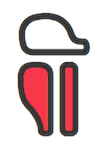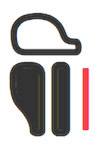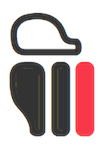Windows Font Installation
http://windows.microsoft.com/en-us/windows-vista/install-or-uninstall-fonts
Macintosh Font Installation
http://support.apple.com/kb/HT2509
Font Selection
After installation, the Legni fonts will appear in the font selection menu of all applications that support the entry of text. (Any application that was open during installation may need to be restarted.) They have been programmed as “symbol” fonts so most applications will know to display the font name in a neutral font rather than forcing one to sort through bizarre partial fingering diagrams in the drop-down menu.
Italic
The italic style is used for the entry extended techniques such as half-holes and ring fingerings. On Macintosh systems the option key can be used instead of the italics style. Even if these techniques are not possible on a given instrument (for example, saxophone) an italics style has been included to prevent an application from trying to create an italics style by angling the regular font.
Bold
The bold style is identical to the regular style except for one important difference:
In the regular style, the graphic for a key or tonehole extends only to the inside edge of the blank diagram's outline.

This allows the middle of a key or tonehole to be colored without altering its outline.
However, for trill keys and optional keys this has the side effect of complicating entry somewhat since both the key and the outline must be entered separately.

The bold style, in contrast, includes both the inside of a key or tonehole and its outline.

This makes entry easier at the cost of not being able to color the inside of a key or tonehole separately from its outline. If color will not or can not be used (for example, in Finale) there is no reason not to use the bold style.
Bold Italic
The bold italic style allows for the entry of extended techniques in the same manner as the bold style.